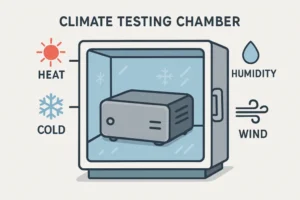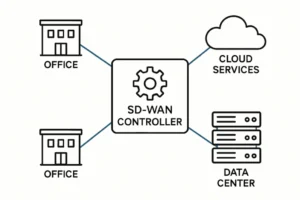Transform your operational technology security posture from reactive firefighting to proactive threat mitigation with a comprehensive incident response plan tailored for OT environments. Unlike traditional IT networks, OT systems control critical infrastructure where downtime isn’t just costly, it can be catastrophic.
Almost 70% of industrial organizations have experienced a cyberattack in the past year, and 1 out of 4 experienced a shutdown of operations as a result. This staggering reality demands immediate action.
Understanding that OT environments require a fundamentally different security approach than traditional IT systems is the first step toward building effective protection. Let’s examine exactly why conventional incident response strategies fall short in operational technology environments.
Critical Differences Between IT and OT Environment Incident Response Planning
Successfully defending industrial systems requires recognizing the fundamental distinctions that separate operational technology from traditional information technology networks. These differences reshape every aspect of how organizations must approach cybersecurity incident response.
Unique Operational Technology Security Challenges
Operational technology security faces constraints that don’t exist in typical IT environments. Legacy systems often run on decades-old operating systems that can’t support modern security agents. Many critical OT devices lack the processing power for real-time monitoring software.
In the ot environment, unique vulnerabilities are introduced by specialized industrial protocols. These protocols create blind spots that attackers regularly exploit. Air-gapped networks, once considered foolproof, now connect to corporate networks through maintenance portals and remote access systems.
Safety-First Approach vs. Confidentiality-First Mentality
Traditional IT security prioritizes confidentiality, integrity, and availability, in that order. OT security flips this completely, putting safety and availability first. You can’t simply shut down a power plant or water treatment facility when suspicious activity appears.
This fundamental shift means your threat response strategy must account for human safety above all else. Containment measures that work in IT environments could trigger safety systems or cause dangerous equipment failures in industrial settings.
Legacy System Constraints and Air-Gapped Networks
Many OT systems weren’t designed for network connectivity, yet modern business needs force integration with enterprise systems. These connections create attack vectors while maintaining legacy limitations that prevent standard security implementations.
Air-gapped networks aren’t truly isolated anymore. USB drives, laptops, and mobile devices regularly cross between networks, carrying potential threats. Your response plan must address these hybrid connectivity scenarios.
Now that we’ve established why OT environments demand specialized incident response approaches, it’s time to build the foundational framework. Here are the essential components that every OT-specific cybersecurity incident response plan must include.
Advanced Threat Response Strategy Development for Critical Infrastructure
Critical infrastructure faces targeted attacks from state-sponsored groups, sophisticated criminal organizations, and insider threats. Your threat response strategy must address these advanced persistent threats while maintaining operational continuity.
Ransomware-Specific Response Protocols for OT Systems
Ransomware attacks on OT systems create unique challenges beyond data encryption. Attackers increasingly target industrial control systems to maximize pressure for payment. Never pay ransoms, it funds future attacks and doesn’t guarantee system restoration.
Prepare for offline operations during recovery periods. This means maintaining paper-based procedures, manual override capabilities, and alternative communication methods. Some facilities might need to shut down temporarily rather than risk safety systems.
Supply Chain Attack Detection and Containment
OT environments face supply chain risks through engineering workstations, vendor remote access, and firmware updates. Implement air-gapped systems for all vendor interactions and require security reviews for any software installations.
Monitor for unusual vendor activity patterns. If a maintenance contractor’s remote access suddenly shows different behavior patterns, investigate immediately. Supply chain compromises often provide initial access for larger attacks.
Insider Threat Mitigation in High-Security OT Environments
Disgruntled employees with OT access pose significant risks due to their system knowledge and physical access. Implement continuous monitoring that doesn’t feel oppressive while detecting concerning behavioral changes.
Focus on privileged access management for engineering workstations and control systems. Even trusted employees shouldn’t have unlimited access to safety-critical systems. Use the principle of least privilege consistently across all OT access.
Even the most comprehensive response strategies are worthless without the ability to detect incidents as they unfold. The key lies in implementing detection systems that understand the unique communication patterns and operational rhythms of OT environments.
Real-Time Incident Detection and Classification in OT Networks
Detection in OT environments requires understanding normal operational patterns that vary dramatically from IT networks. Industrial systems have predictable communication cycles, maintenance windows, and seasonal variations that affect baseline behavior.
Network Segmentation Monitoring for Lateral Movement Detection
Segment your OT networks into functional zones and monitor all inter-zone communications. Attackers typically gain initial access through less-secure systems and then move laterally toward critical control systems.
Deploy monitoring at network chokepoints rather than trying to instrument every device. Many OT devices can’t support monitoring agents, but network-level visibility catches most lateral movement attempts. Focus on unusual cross-zone traffic patterns.
Behavioral Analytics for Anomalous OT Device Communication
OT devices typically communicate in predictable patterns, controllers polling sensors on fixed schedules, HMIs requesting data updates, and historians collecting measurements. Deviations from these patterns often indicate problems or attacks.
Machine learning models can identify subtle changes that humans might miss. When a controller suddenly changes its polling frequency or starts communicating with unusual devices, investigate quickly. These anomalies often precede system failures or security incidents.
Integration of Safety Instrumented Systems (SIS) in Incident Detection
Safety systems can provide early warning indicators of cyber attacks that affect physical processes. Unusual safety system activations might indicate cyber attacks affecting process control rather than mechanical failures.
Don’t rely solely on safety systems for detection, they’re designed for process safety, not cybersecurity. However, correlating safety alerts with network monitoring can provide valuable context about attack impacts on physical operations.
Once an incident is detected and classified, the clock starts ticking on containment, but traditional “shutdown everything” approaches can cause more damage than the attack itself. Effective OT containment requires surgical precision that protects operations while neutralizing threats.
Post-Incident Analysis and Continuous Improvement
Every incident provides learning opportunities that can strengthen your security posture and operational resilience. However, OT incident analysis must consider operational impacts and safety implications alongside traditional cybersecurity metrics.
OT-Focused Lessons Learned Documentation
Focus lessons learned on operational impacts rather than just technical details. Document how security incidents affected production, safety systems, and operational procedures. This operational perspective provides valuable insights for future preparedness.
Include input from plant operators and maintenance personnel who experienced the incident firsthand. Their perspectives often reveal impacts that security teams might miss.
Tabletop Exercises Simulating Real-World OT Attack Scenarios
Conduct exercises that test your response procedures under realistic constraints. Include scenarios where network connectivity is lost, key personnel are unavailable, and systems must operate in degraded modes.
Involve operational personnel alongside security teams in these exercises. The collaboration between security and operations teams during simulated incidents reveals gaps that might not appear in security-only exercises.
Metrics and KPIs for Measuring OT Incident Response Effectiveness
Develop metrics that reflect OT-specific concerns like safety system performance, production impact, and recovery time to normal operations. Traditional IT metrics like mean time to detection don’t capture operational effectiveness.
Track improvement trends over multiple incidents to validate that lessons learned are improving response capabilities. Consistent improvement demonstrates that your program is maturing effectively.
As attackers evolve their tactics and OT environments become increasingly connected, yesterday’s incident response plans may not address tomorrow’s threats. Stay ahead of the curve by future-proofing your strategy against emerging attack vectors and technological changes.
Emerging Trends and Future-Proofing Your OT Incident Response Plan
The convergence of IT and OT systems, cloud connectivity, and emerging technologies like AI and IoT are reshaping the threat landscape for industrial environments. Your incident response plan must adapt to these changes.
Zero Trust Architecture Implementation in OT Environments
Zero trust principles are increasingly relevant for OT environments as systems become more connected. Implement continuous verification and assume that networks are already compromised when designing detection and containment strategies.
Apply zero trust gradually in OT environments to avoid disrupting operations. Start with less-critical systems and expand carefully as you understand the operational impacts.
Cloud-Connected OT Security Incident Management
Cloud connectivity introduces new attack vectors but also enables enhanced monitoring and response capabilities. Prepare for incidents that span on-premises OT systems and cloud-based management platforms.
Consider hybrid deployment models where sensitive control functions remain on-premises while monitoring and analysis capabilities utilize cloud resources for enhanced capability and scalability.
Quantum-Resistant Cryptography for Long-Term OT Asset Protection
Many OT systems have operational lifespans measured in decades, extending well into the quantum computing era. Begin planning for quantum-resistant cryptography deployment in systems that will operate beyond 2030.
Focus quantum-resistant preparations on systems with the longest operational lifespans first. These systems face the greatest risk from future quantum computing capabilities.
With these comprehensive strategies and future-focused insights, you’re equipped to build a robust OT incident response plan, but implementation often raises specific questions. Let’s address the most common concerns that security professionals face when transitioning from theory to practice.
Moving Forward with Confidence
Building an effective incident response plan for OT environments isn’t just about cybersecurity, it’s about protecting the critical infrastructure that keeps society functioning. The specialized nature of operational technology security demands approaches that prioritize safety while maintaining operational continuity.
Your cybersecurity incident response capabilities will determine whether an incident becomes a minor disruption or a catastrophic failure. Don’t wait for an attack to test your threat response strategy.
Common Questions About OT Incident Response Planning
- How long should an OT incident response plan take to activate compared to traditional IT incidents?
OT incident response should activate within minutes for safety-critical situations, but containment decisions may take longer due to operational impact assessments and safe shutdown requirements.
- Can we use the same incident response tools for both IT and OT environments?
No, OT environments require specialized tools that understand industrial protocols and won’t disrupt sensitive operational processes. Generic IT tools can cause outages.
- What are the legal implications of shutting down critical infrastructure during a cyber incident?
Shutdowns may trigger regulatory reporting requirements and potential liability issues. Consult legal counsel during planning to understand obligations for your specific industry.
Also Read-Data Science Innovations Transforming the Fintech Landscape








